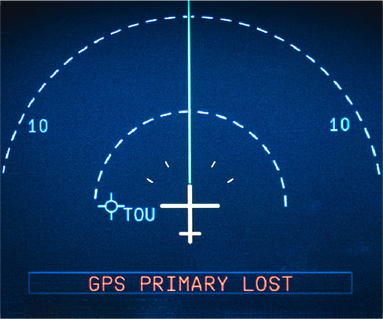
Next-Generation Atomic Frequency Reference
Tiqker provides hydrogen maser-like short-term performance in a much lower size, weight, and power package, with Cs-Beam-like holdover up to 7 days.
User-Friendly, Set and Forget
Developed for Dynamic Operations
Low-Phase Noise Reference
Tiqker Pilot Program
Infleqtion is offering a pilot program for early Tiqker adopters. A pre-production Tiqker unit can be delivered to your premises for a limited time at a reduced price. The cost of the pilot program can be put toward purchase of a Tiqker unit at the end of a successful pilot program. A successful pilot program results in the pilot user incorporating and demonstrating the technology in its use case, providing feedback to Infleqtion on the product use, and sharing any relevant data on the clock’s performance or features of interest.
Tiqker Webinar
Hear from Dr. Judith Olson on how Infleqtion is commercializing Tiqker, the uses for this type of emerging technology, and how we are bringing this transformational technology out of the laboratory and into the world in a robust form.
As the reliance on accurate positioning, navigation, and timing (PNT) information continues to grow across all sectors, the limitations of current GPS technology have become increasingly apparent.
Applications Include:
Precision Geolocation
Autonomy
Electronic Warfare
Assured Communications
Solution: Tiqker
-

Precision Timing and Synchronization
Atomic clocks ensure that AI workloads are processed with minimal latency and that data is consistently and accurately timestamped.
-

Efficient Resource Utilization
Atomic clocks optimize resource allocation, allowing data centers to efficiently meet the dynamic demands of AI workloads & reduce the risk of system overload.
-

Future-Proofing for AI Growth
As AI adoption continues to grow, atomic clocks serve as the foundational technology, enhancing data center efficiency & reliability to support increasing demand.
Next-Generation Atomic Clocks
Quantum sensing technology and next-generation atomic clocks have emerged as an upgrade path for achieving high-precision, resilient navigation in challenging environments where GPS is unavailable or susceptible to spoofing/denial attacks.
The global timing standard is currently based on the ground-state microwave transition of the Cesium-133 atom. Next Generation atomic clocks are based on optical transitions, which tick over 10,000 times faster, providing a more precise source of time for navigation.
Adopting optical clock technology in national timescales and next-generation GNSS constellations will enable global sub-nanosecond synchronization and millimeter-level positioning.
Tiqker ensures continuous access to precise timing for data centers and telecommunications infrastructure that rely on GNSS/GPS-based timing solutions, even during interruptions.
Tiqker has a 3U form factor for standard rack applications.
Use Case
Mitigating Data Center Meltdowns in the Age of AI
Data centers provide the infrastructure supporting AI applications. However, with AI's rapid growth, data centers struggle to cope with the increasing demand.
This strain has pushed capacity to critical levels, resulting in performance issues, delays, and system failures.
As AI adoption continues to soar, there is a need for scalable and efficient infrastructure solutions to support the increasing demands of AI workloads.
Related Research
-
Compact cold atom microwave clock for GPS-denied environments
Microwave atomic clocks are near-term solutions for commercial GPS-like timing and holdover services. Cold atoms provide environmental decoupling and lasers eliminate bulky microwave cavities. Our objective is to miniaturize a cold rubidium microwave clock with rapid startup and a design optimized for manufacturability. A magneto-optical trap cools atoms that are probed using a laser-based coherent population trapping technique. To achieve our goal, we fabricated a miniaturized ultra-high vacuum cell, ion pump, atom source, optics, and an integrated control system. The entire device fits into a 25-liter rack mounted chassis. It is tolerant to orientation and acceleration. The electromagnetically induced transparency contrast approaches unity, producing strong Ramsey fringes with widths of tens of Hertz. Frequency stability, better than 10-11 at one second, is comparable to commercial standards, but with reduced size and weight. This work has set the stage for our development of dramatically more precise optical standards. We demonstrate several two-photon rubidium schemes based on both thermal vapors and cold atoms. For example, our prototype thermal vapor approach yields sub-10-12 performance at one second and long-term performance near 10-15 with competitive size and weight characteristics.
-
Performance of a portable rubidium cold-atom optical clock
There is mounting interest in portable optical atomic clocks for enhancing or replacing GPS timing signals in both commercial and defense-related applications. Optical clocks based on warm vapors are simple in implementation yet performance at long time scales is limited by systematic thermal sensitivities of the system. Vescent, in collaboration with ColdQuanta, has designed and built a portable optical clock based on trapped rubidium atoms to 1) utilize the reduced complexity of rubidium-based systems compared to higher performance cold-atom optical clocks and 2) improve on the long-term performance compared to optical clocks based on hot vapor systems. Current Allan Deviation performance is measured to be 5×10-12/√τ and is shot-noise limited by the fluorescence detection. Improvements to the systems are on-going, and the size, weight, electrical power, performance, and limitations of the system will be discussed in detail.
-
Atomic clock with atom-trap enhanced oscillator regulation
A rubidium optical atomic clock uses a modulated 778 nanometer (nm) probe beam and its reflection to excite rubidium 87 atoms, some of which emit 758.8 nm fluorescence as they decay back to the ground state. A spectral filter rejects scatter of the 778 nm probe beams while transmitting the 775.8 nm fluorescence so that the latter can be detected with a high signal-to-noise ratio.
Since the spectral filter is only acceptably effective at angles of incidence less than 8° from the perpendicular, the atoms are localized by a magneto-optical trap so that most of the atoms lie within a conical volume defined by the 8° angle so that the resulting fluorescence detection signal has a high signal-to-noise ratio. The fluorescence detection signal can be demodulated to provide an error signal from which desired adjustments to the oscillator frequency can be calculated.
Contact Us
For more information, please contact sales@infleqtion.com.







